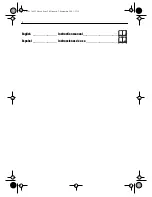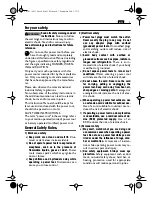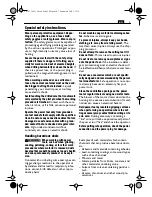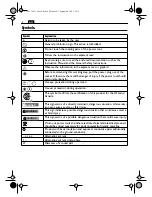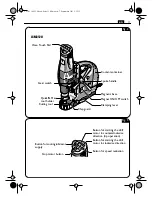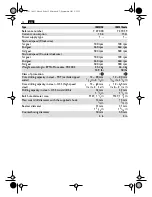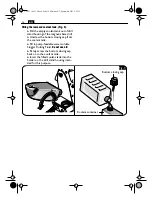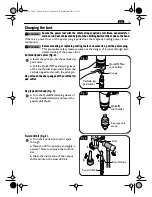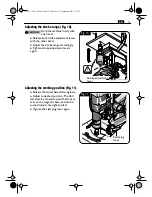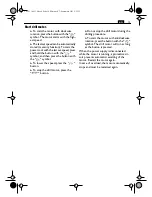
5
en
Special safety instructions.
Wear personal protective equipment. Depen-
ding on the application, use a face shield,
safety goggles or safety glasses. Wear ear pro-
tection.
The safety glasses must be capable of
protecting against flying particles generated
by the various operations. Prolonged expos-
ure to high intensity noise may cause loss of
hearing.
Secure the power tool with the safety strap
supplied if there is danger of it falling, espe-
cially for work carried out at elevated heights,
when drilling horizontally or above the head.
If
there is a power loss, or the power plug is
pulled out, the magnetic holding power is not
maintained.
When working overhead or on vertical sur-
faces, the coolant container must not be used.
Use Slugger Cutting Paste instead.
Liquids
penetrating your electric power tool may
cause electric shock.
Avoid touching the drilled core that is automati-
cally ejected by the pilot pin when the working
procedure is finished.
Contact with the core
when it is hot, or if it falls, can cause personal
injuries.
Operate the power tool only from grounded
contact sockets that comply with the specifica-
tions. Do not use any connection cables that are
damaged; use extension cables with a groun-
ded contact that are checked at regular inter-
vals.
A grounded conductor without
continuity can cause an electric shock.
Do not machine any material containing asbes-
tos.
Asbestos is carcinogenic.
To prevent injuries, always keep your hands,
clothing, etc. away from rotating swarf.
The
swarf can cause injuries. Always use the chip-
ping protector.
Do not attempt to remove the cutting tool if it
does not turn.
This can lead to serious injuries.
Do not rivet or screw any name-plates or signs
onto the power tool.
If the insulation is dama-
ged, protection against an electric shock will
be ineffective. Adhesive labels are recommen-
ded.
Do not use accessories which are not specifi-
cally designed and recommended by the power
tool manufacturer.
Safe operation is not ensu-
red merely because an accessory fits your
power tool.
Clean the ventilation openings on the power
tool at regular intervals using non-metal tools.
The blower of the motor draws dust into the
housing. An excessive accumulation of metal-
lic dust can cause an electrical hazard.
Hold power tool by insulated gripping surfaces
when performing an operation where the cut-
ting accessory may contact hidden wiring or its
own cord.
Cutting accessory contacting a
“live” wire will make exposed metal parts of
the power tool “live” and shock the operator.
Before putting into operation, check the power
connection and the power plug for damage.
Handling hazardous dusts
When working with power
tools, such as when grinding,
sanding, polishing, sawing or for other work
procedures where material is removed, dusts
develop that are both hazardous to one’s health
and can spontaneously combust or be explo-
sive.
Contact with or inhaling some dust types can
trigger allergic reactions to the operator or
bystanders and/or lead to respiratory infec-
tions, cancer, birth defects or other repro-
ductive harm.
Examples of such materials which contain
chemicals that can produce hazardous dusts,
are:
– Asbestos and materials containing asbestos
– Lead-containing coatings, some wood types
such as beech and oak
– Minerals and metal
– Silicate particles from bricks, concrete and
other materials containing stone
– Solvent from solvent-containing paint/var-
nish
– Arsenic, chromium and other wood pre-
servatives
WARNING
3 41 01 169 21 0.book Seite 5 Mittwoch, 7. September 2011 3:32 15


